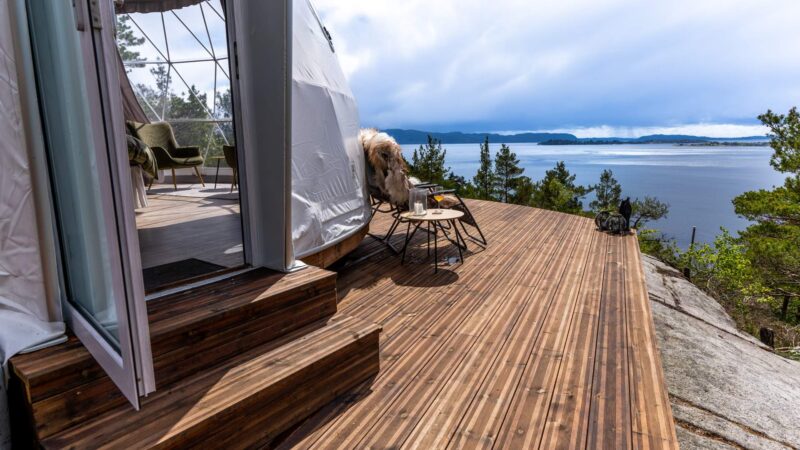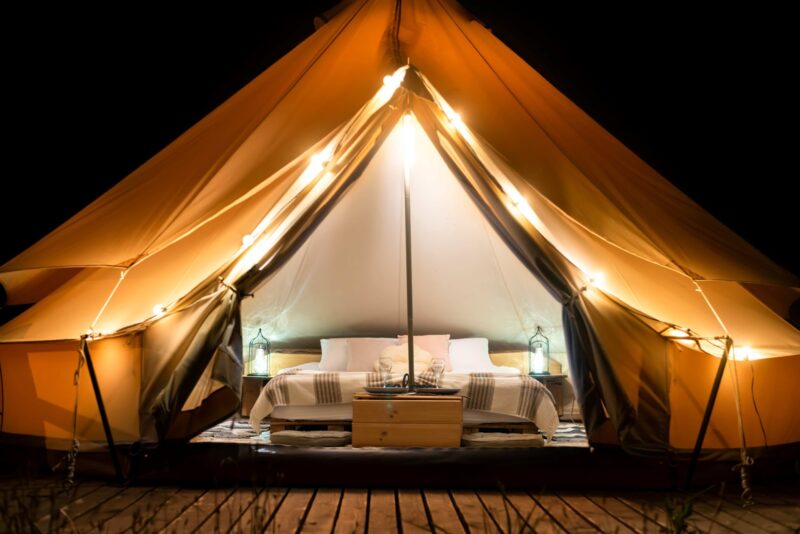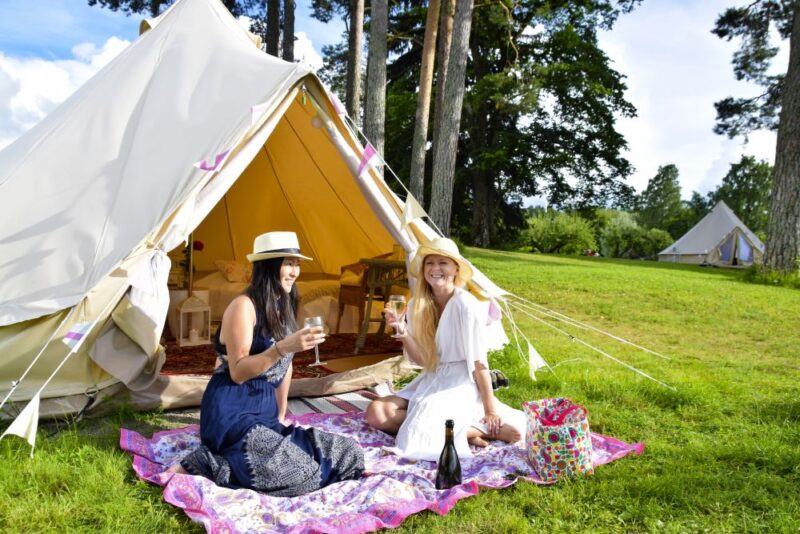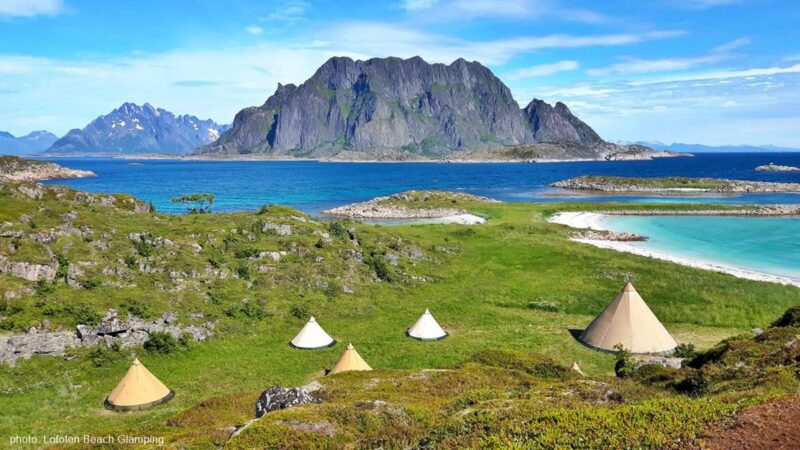Norway is renowned for its breathtaking natural beauty and pristine landscapes. Therefore, as you would expect, it is also at the forefront of sustainable tourism.
As travellers become increasingly conscious of their environmental impact, glamping has emerged as a popular eco-friendly alternative to traditional accommodation options. Sustainable glamping in Norway combines the comfort and luxury of glamping with a commitment to minimising the impact on the environment, so that you never have to say, “I remember that place when it was nice, it’s sad to see it the way it is now”.
Norway is the last country where you would expect to find a negative environment, given its clean air, rugged wilderness and high level of socio-economic development. Join us as we explore how sustainable glamping empowers you to embark on eco-friendly adventures while preserving Norway’s natural wonders for future generations.
We all like to know we have played a part in something good. Sustainable glamping in Norway gives you the opportunity to do exactly that and at the same time have once in a lifetime experiences.
The Principles of Sustainable Glamping

Sustainable glamping is rooted in the principles of ecotourism. The International Ecotourism Society lists eight core principles providers should follow, which are:
- Minimise physical, social, behavioural, and psychological impacts
- Build environmental and cultural awareness and respect
- Provide positive experiences for both visitors and hosts
- Provide direct financial benefits for conservation
- Generate financial benefits for both local people and private industry
- Deliver memorable interpretative experiences to visitors which help raise sensitivity to host countries’ political, environmental and social climates
- Design, construct and operate low-impact facilities
- Recognise the rights and spiritual beliefs of the Indigenous people in your community and work in partnership with them to create empowerment
The great advantage of ecotourism is that it isn’t just about preserving the past or the here and now. It is part of the broader push for sustainable development, which preserves the resources of today as a way of building a self-sufficient tomorrow.
Glamping sites that adhere to these principles employ a range of eco-friendly practices. These include:

- Using Renewable Energy: Sustainable glamping sites often rely on renewable energy sources, such as solar panels or wind turbines, to power their facilities. By harnessing the power of nature, these sites reduce their carbon footprint and minimise their reliance on fossil fuels.
- Water Conservation: Water is a precious resource, and sustainable glamping sites take steps to conserve it. This may include the use of low-flow toilets and showerheads, rainwater harvesting systems and greywater recycling for irrigation.
- Waste Reduction and Recycling: Responsible waste management is a key component of sustainable glamping. Sites may implement comprehensive recycling programmes, compost organic waste and provide guests with reusable or biodegradable products to minimise single-use plastics.
- Locally Sourced and Eco-Friendly Materials: Sustainable glamping sites often use locally sourced and eco-friendly materials in the construction and furnishing of their accommodations. These may include reclaimed wood, organic fabrics and materials with a low environmental impact such as bamboo or cork.
- Education and Awareness: Sustainable glamping sites prioritise educating guests about environmental conservation and responsible tourism practices. Through guided nature walks, workshops and informational materials guests are encouraged to develop a deeper understanding and appreciation for the natural world.
Eco-Friendly Glamping Experiences in Norway

Norway has always attracted the environmentally conscious traveler due to the nature of its landscapes. Unspoilt mountains, fjords and forests are more likely to be interesting to the nature lover than the resource-guzzling options available in noisier locations.
Consequently Norway offers a wide range of sustainable glamping experiences in which you can immerse yourself in stunning natural beauty while minimising your environmental impact. Although this concept may be seen as an ideal in some countries, or an obligation imposed upon local and national authorities, in Norway this is the way things have naturally been done, thus creating the gorgeous environment people are flocking to today.
Glamping as a concept needs very little adaptation to be an essential part of the local way of life, making the visitor one with the host community. Some notable eco-friendly glamping options include:
- Hardangervidda National Park Glamping: Nestled in the heart of Norway’s largest national park, Hardangervidda, this glamping site offers luxurious yurts and tipis which are powered by solar energy and heated with wood-burning stoves. Guests can explore the park’s vast wilderness, hike to glaciers and waterfalls and observe the diverse wildlife, all while leaving a minimal ecological footprint.
- WonderInn Arctic: Located near the Arctic city of Tromsø, these state of the art properties, offered in association with ÖDD Houses, provide a front-row seat to the mesmerising northern lights. The accommodations are constructed with eco-friendly materials and are designed to minimise energy consumption. Guests can participate in low-impact activities, such as snowshoeing and cross-country skiing, while learning about the fragile Arctic ecosystem.
- Eco-Lodge Glamping in Jotunheimen National Park: Situated in the stunning Jotunheimen National Park, this eco-lodge offers luxurious glamping accommodations which are built with sustainable materials and designed to blend seamlessly with the surrounding landscape. The lodge operates on renewable energy, employs water conservation measures and offers organic, locally sourced cuisine. Guests can embark on guided hiking and wildlife watching excursions, learning through these about the park’s unique biodiversity and conservation efforts.
- Fjord-Side Glamping in Geiranger: Overlooking the majestic Geirangerfjord, a UNESCO World Heritage Site, this sustainable glamping site offers panoramic views and eco-friendly accommodations. The site uses renewable energy, implements waste reduction and recycling programmes and provides guests with information on how to minimise their impact whilst exploring the fjord’s stunning beauty.
Conclusion

Sustainable glamping in Norway offers a unique opportunity for visitors to combine luxury and comfort with environmental responsibility. By choosing eco-friendly glamping accommodations you can minimise your carbon footprint, support local conservation efforts and develop a deeper appreciation for Norway’s natural wonders.
As you embark on your sustainable glamping adventure, remember that every small action, from reducing waste to supporting local communities, contributes to preserving Norway’s pristine landscapes for generations to come. So, pack your bags, embrace the principles of ecotourism, and discover the beauty of Norway through the lens of sustainable glamping.


